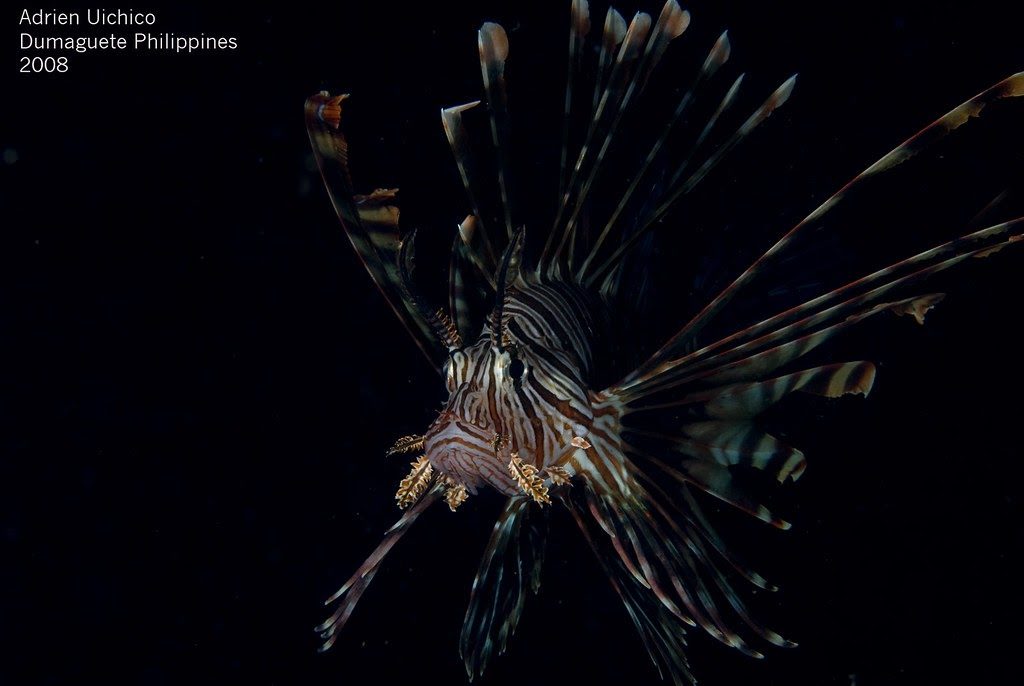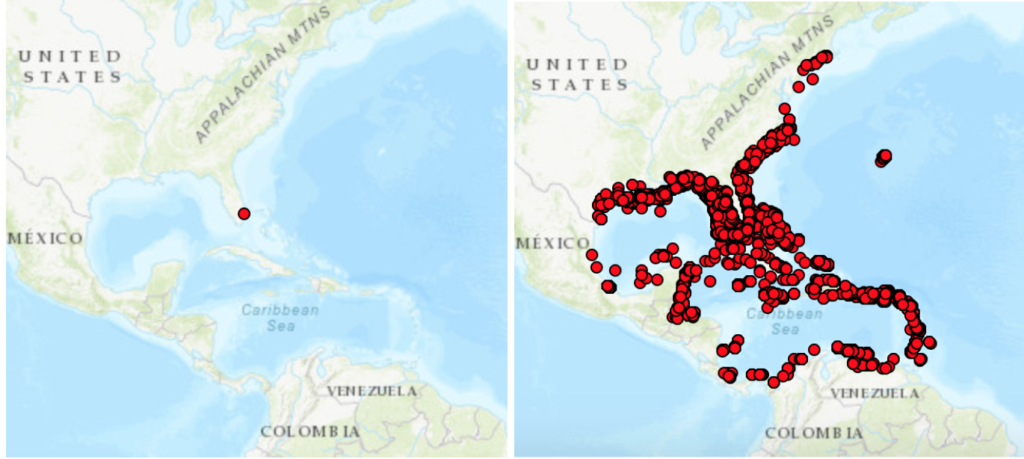Note: This piece was originally published in May 2019.
Abstract: Invasive lionfish in the Caribbean have been called “ravenous,” “destructive,” and “a living, breathing, devastating oil spill.” The hungry predators also grow differently between similar spots in the Caribbean, which a recent study argues makes the biomass of local lionfish populations hard to estimate accurately. Fine-tuning calculations will help scientists pinpoint how many of the hungry invaders are in an area — and to track their population as efforts to control them continue across the Caribbean.
Villaseñor-Derbez JC, Fitzgerald S. 2019. Spatial variation in allometric growth of invasive lionfish has management implications. PeerJ 7:e6667 doi.org/10.7717/peerj.6667

Since the first invasive lionfish was spotted off the coast of Florida three decades ago, the popular pet fish have overrun coral reefs throughout the Caribbean. They have been called “ravenous,” “destructive,” and “a living, breathing, devastating oil spill.” Lionfish are venomous, notoriously quick breeding, and can decimate native fish populations within a few years of invading a reef. Now a new challenge for managing the lionfish invasion has emerged: their weight gain as they grow is different all over the Caribbean.
Ecologists commonly measure biomass, or the combined weight of all the members of a local population, to study a species, figure out a solution and make better predictions about how the population may change in the future. Researchers build models for population and biomass that include the lengths and weights of the lionfish they catch. These models help manage the invasive pests because the reflect not just how many lionfish are on a particular reef, but how large those fish are.

For some animals, like dogs, there’s a fairly predictable relationship between how large an animal gets and how much it weighs. For humans, the relationship is fuzzier: knowing that a woman is 5 feet and 8 inches tall doesn’t help us determine how much she might weigh. Ecologists can use length and weight measurements to predict how large a population is overall, and to estimate how old most the individuals in the population are. Although the results wouldn’t work well for people, the method is much better for studying lionfish and predicting how their populations will shift.
Or at least that’s what coral reef managers and researchers might hope. A new study that reviews over a dozen lionfish biomass calculations across the Caribbean and Gulf of Mexico finds that even between neighboring sections of the Caribbean, lionfish don’t follow the same growth patterns. Researchers caught fish that seemed to grow differently, possibly because of differences in diet.
The difference isn’t trivial. When researchers caught over a hundred lionfish off the coast of Mexico and used biomass calculations from other lionfish studies, they underestimated the biomass by as much as 75% or overestimated it by as much as 140%. The margin of error was even worse for predicting individual lionfish weights, with models from other Caribbean areas estimating that lionfish might weigh three times more than their actual weight for a given size. This doesn’t mean that the biomass models in the other studies were wrong; rather, it suggests that there is no one-size-fits-all pattern of invasive lionfish growth, even between neighboring populations.

To fight off the lionfish invasion, ecosystem managers and scientists will have to personalize their lionfish biomass calculations to their own region as much as possible. These more accurate lionfish biomass calculations will help conservationists make better decisions about where to direct funding, which islands to incentivize fishing programs on, and which ecosystems and locations may be most vulnerable.
Ecologists say that lionfish are in the Caribbean to stay, and it’s unlikely that other threats to Caribbean reefs (like overfishing and climate change) will budge either. Protecting Caribbean reefs, and the people that depend on them, requires constantly adapting strategies–and better estimations of how many hungry lionfish are lurking on a reef will without a doubt make those strategies work better.
Sierra is a master’s student in Stanford University’s Earth Systems department studying science and environmental communication. Her bachelors degree was also in Earth Systems, with an emphasis on oceans and climate, which took her from Australia to South Africa to French Polynesia and Kiribati. She is from Monterey, California.

